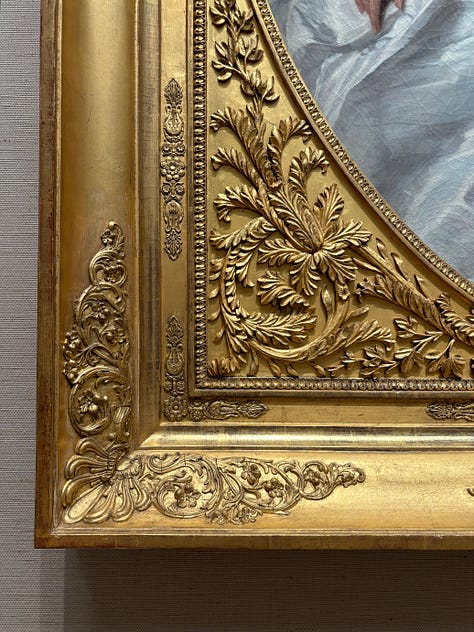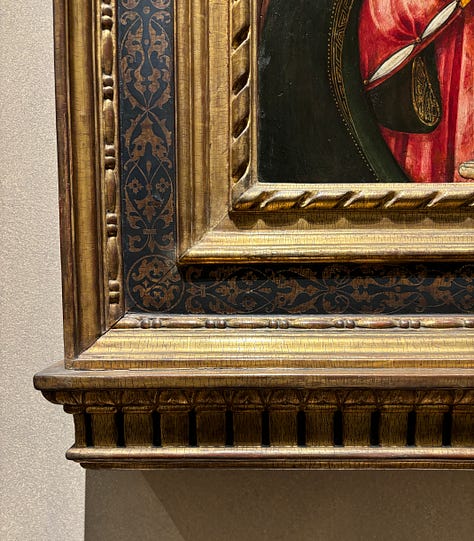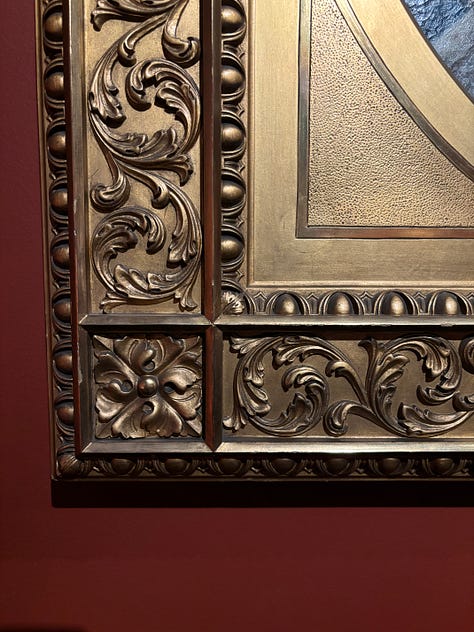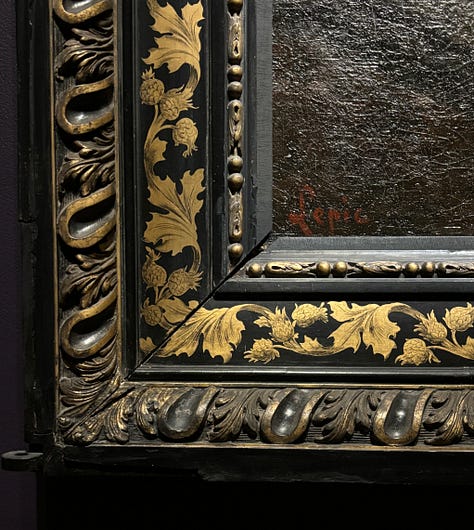The first time I paid focused attention to the frames around art was during my internship at the Metropolitan Museum of Art. In addition to the work we did, we were given tours of behind-the-scenes areas at the museum. One visit was to a painting storage room. The curator pulled out numerous upright rolling panels while explaining about storage and care of the art.
One of the stories she shared was about paintings by Mary Cassatt. When the museum acquired a number of her pieces of art, they were surprised that many were framed in boring white, rather roughly painted frames. Before displaying the art, they removed the “offending” frames and installed the art in more attractive frames appropriate to the time period.
Later they learned that in fact these boring white frames had been selected by Mary Cassatt herself, not wanting the frame to detract from the art itself. The moral of the story was that thank goodness they had preserved those frames in storage so that they could use them as Mary Cassatt intended.
This anecdote presented me with a new perspective when looking at framed art. Pay attention to the frame! It was as if my peripheral vision had expanded! A few years later, on a return visit to New York, the Met had an exhibit just about frames. I found it fascinating and enlightening, even if, to this day, I remember being annoyed that the labels sounded overly scholarly.
Even today, I push myself to look at both the art AND the frame. Sometimes the frame adds to my appreciation of the art. Other times, it surprises me by its design, color, or decoration.
A Snippet of Frame History
Picture frames are not a recent thing. They have a long history that stretches back to ancient Egypt where painted panels were often surrounded by decorative borders. These were not frames like we think of them today, but rather ornamental elements meant to visually enclose the artwork. These borders might have geometric patterns, symbols, or hieroglyphics, all meant to enhance the story or the meaning of the panel.
Medieval frames were more than just borders. They were integral to the artwork, often reflecting the artistic styles or architecture of the era. Usually, they were made of wood, sometimes mimicking church architecture, and often carved and gilded.

Renaissance frames became more like the frames we use and see today. They had a box-like structure with a slightly raised decorative band in the middle. They were wood and were either painted or gilded.
Here are a few frame pics I’ve taken from various museums. A chance to let your eyes wander, admire, and to be curious. And to step away from stress and anxiety for a moment. Notice the details. Admire the craftsmanship. Be curious about the tools used and the time it took.









One of my favorite phrases is to look with new eyes. Look again at the frames you have on the art or photographs in your home or office. Check out frames when you visit friends’ homes. And, of course, check out frames on artwork in museums, historic sites, or art galleries. It just might add a new perspective to how you look at art!
Check these out, too!
Thank you so much for being a part of The Savvy Museum Visitor! I’m glad you’re here.







Gosh. These frame examples are so intricate. Some even seem to be architectural. I wonder what it means about me .. that most of my art is in minimal frames or no frame at all. Hm..